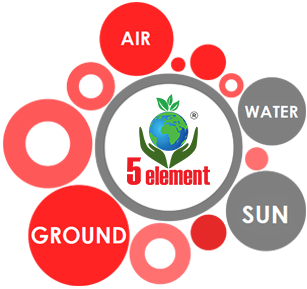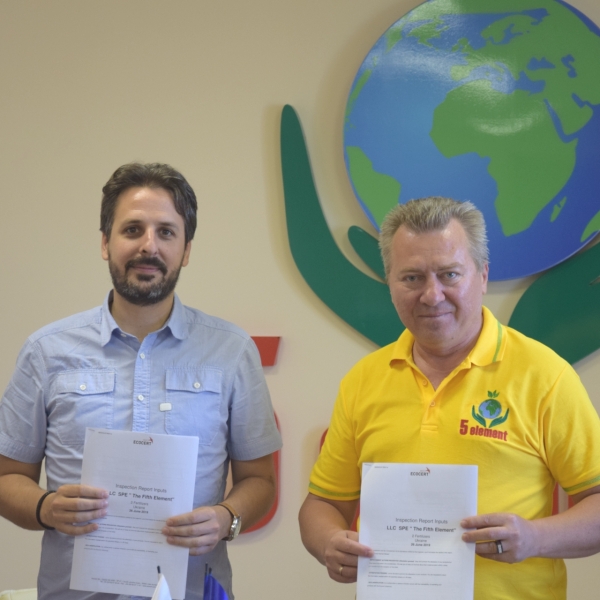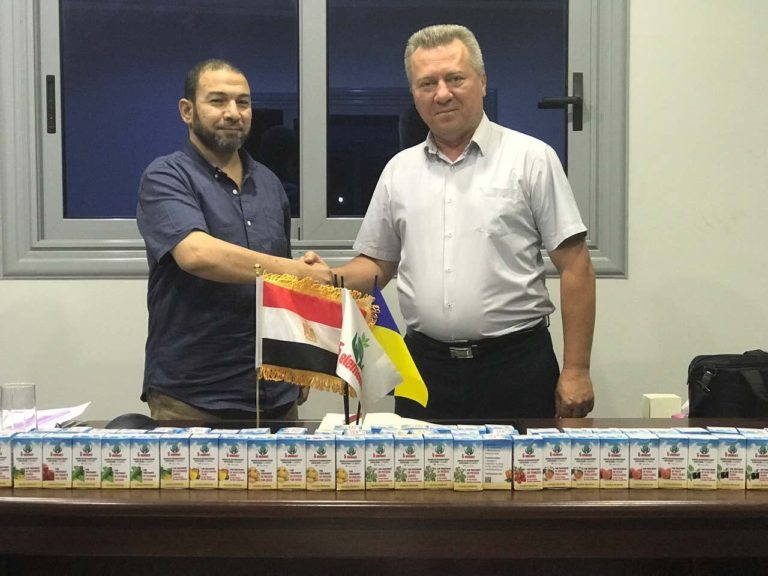And there are five indicators of improvement from application:
1 – quantitative growth of the crop;
2 – improvement of qualitative indicators of the grown production (upgrade in grain class is observed, for example, winter wheat due to the increase in protein (gluten) in the grain has reached the transition from fodder to class 3. The increase in industrial crops (sunflower, flax, rape, etc.) to 10 % of seed oil. In fruit and berry crops (sugar cane, strawberry, grapes, etc.) – there is an increase in the content of sugar (fructose, glucose, sucrose) in fruits;
3 – immunity improvement in plants – active resistance to diseases and pathogenic microorganisms was noted, suppression of infections in roots and leaves of plants was observed, plants suffered less from the negative influence of exogenous pathogens. In this case, it becomes possible to reduce the costs of plant protection (fungicide treatment);
4 – drought and frost resistance – enhancement of biologically and genetically determined plant properties, ability to resist weather conditions – frost, high temperatures and low air humidity, lack of precipitation, dry winds, and with less losses to bear the consequences of the negative influence of weather factors;
5 – improvement of the physical and mechanical state of the soil (loosening, optimization of acidity (pH) of the soil); improving the quality of soil drainage (water permeability); improvement of gas exchange in soil; soil recovery (phytosanitary condition); formation and accumulation of biohumus – for three years up to 0.14%, allows in the first year after seed treatment to reduce by 20% the rate of application of traditional mineral fertilizers (NPK) – saltpeter, nitroammophoska (ammonium nitrate phosphate fertilizer), carbamide.
Microfertilizer “5 ELEMENT” provides a high level of efficiency due to a significant increase in the intensity of growth and development of the root system and aboveground mass of plants, activation of internal and external microbiological and physiological processes that affect the productivity and quality of harvest.
While treating seeds with the “5 ELEMENT” product, plants already form the powerful root system at the first stages of organogenesis, are characterized by accelerated development during the vegetation period, allow to obtain early production.
Numerous studies have shown that the root system is a kind of biochemical laboratory. The plant resistance to unfavorable environmental factors, for example, frost, temperature stress, lack of precipitation, etc., as well as the ability to effectively absorb soil moisture and applied nutrients will largely depend on the degree of the root system development. These factors have a direct impact on the formation and transportation of substances such as glucose, sugar, starch to fruits.
In today’s world, the main task of successful enterprise development is to ensure wide profit margins and profitability of agricultural production. One of the ways to achieve this goal is to reduce the costs of agricultural commodity production while increasing its efficiency.
The newest development of Ukrainian science – an innovative product in modern agriculture and plant growing – environmentally friendly Microfertilizer granulated “5 ELEMENT”, which application radically changes the classical methods of agricultural production. This is a complex starting microfertilizer, as well as the most important component of fertilizing during the vegetational season.
It is compatible with any chemical fertilizers and preparations. This is a new environmentally friendly nano-substance intended for the revival of soil fertility, accumulation of humus, soil loosening, strengthening of plant immunity, stable increase in yield, and significant improvement in the quality of products. Deputy Director General for Research, Doctor of Chemical Sciences, Author of more than one hundred patents, Professor Golik Georgiy Andreevich worked for many years on its development.
Carrying out numerous experiments with compositions of new substances, he invented a composition that makes it possible to achieve maximum activation of FUNGI ENDOPHYTE, which contribute to the rapid development of useful soil microorganisms, primarily various bacteria. Thus, a process occurs that is identical to the action when large quantities of mineral fertilizers (from 1 to 4 dt/ha) and organic (5-10 t/ha) fertilizers are introduced into the soil. As a result of the conducted experiments and control of biological activity of soils, the mechanism of interaction in the system “plant-microorganisms-soil” was revealed. That is, a direct and inverse relationship has been established, to which very few people paid attention, trying to solve the problem of increasing the yield and quality of products by usual, generally accepted methods, which, unfortunately, often wasn’t rewarding.
Symbiosis with microorganisms – is the basis of plant life.
The role of the “supermarket” for plants is performed by fungi that form mycorhiza, and the radical microflora plays the role of “specialized stores”. Possibilities of rhizosphere microflora are limited due to their small size and the presence of highly specialized enzymes, which are capable of splitting and digesting only a certain type of organic matter. For example, rhizosphere nitrogen fixators (rhizobia, or nodule bacteria) are able to deliver for plants only one element of their nutrition – nitrogen. Another thing – fungi, many of which are simply “giants of the underworld” – is a real “supermarket for plants”, in which they “have everything”.
Firstly, the fungi are huge even by our standards: their hyphaes (mycelium) spread hundreds of meters around, and the weight sometimes reaches several tons.
Secondly, they have a very powerful enzymatic apparatus capable of producing a variety of enzymes. These are special proteins that act as catalysts in living nature. They are able to “digest” (break down) a variety of nutrients in the soil – both the detritus (decomposing plant residues) and molecules of humins from the nutrient potential, including even the most resistant of them. A soil humus is mainly represented by salts of humic acids, that is, compounds of organic structure with inorganic elements (or minerals) of the soil (phosphorus, potassium, etc.), as well as nitrogenous compounds.
Thus, humus is a huge “pantry” or “warehouse”, where there are all nutrients for plants. But only so-called «moving humus» is available to plants – easily soluble, which is very quickly consumed or destroyed. This soluble part of humus plants can absorb with their root hairs – devices for absorption. Once again, we emphasize: such humus stocks in the soil are very quickly depleted because of their accessibility not only to plants, but also to microbes (when detritus organic feed ends, microbes immediately switch to the consumption of stocks of readily accessible humus). For this reason, some of the microbes are “competitors” of plants. Another “competitors” of cultivated plants are weed plants. After rapid depletion of the moving part of humus, plants begin to feel “hunger” in the mineral root nutrition. There is a lot of humus in the soil, but plants cannot “get” it — they do not have enzymes that can “digest” complex biochemical compounds. In other words, the there is a lock on the doors of the warehouse, and there is no key (enzymes). Look and you will see for yourself – if the soil is black, it means a lot of humus in it, because it is the humus that color the soil in black (unless you consider it in particular). To verify the presence of humus, you do not even have to go to the laboratory to conduct soil research – humus is in the soil, just it is not available to plants. To “get” it from the “warehouse”, you need a “key” – enzymes. The plants in this situation have two choices: either «starve» or “cry for help”. The only one who can help plants in this situation is rhizosphere microbes (rhizobia or other nitrogen fixers). But their capabilities are limited, because they can offer plants only nitrogen. Here it is, the clue — why our plants “fatten”, » but “do not breed”. Rhizobia (nodule bacteria) provide plants with a “one-sided” diet – a lot of nitrogen and very little phosphorus and potassium. And this will always happen if we even «pile the soil» under the plants with mountains of organic matter or the notorious humus, that is, “we will feed plants enough” (in our understanding). However, phosphorus and potassium will still be inaccessible to plants – there is no one to extract them (“one door of the warehouse was opened, and the keys for another one were lost”). And what is remain – indeed, go to the store for fertilizers (which many do, because they do not see any other way).
It seems that here we were intentionally “put a trap” and convinced that, really, there is no other way out. One issue remains unresolved: who have benefits from arranging traps? Who is interested in hiding the truth? The situation is obvious. You will see for yourself when you realize that chemical mineral phosphorus and potassium fertilizers are not necessary for plants, forget about their existence. The reserves of phosphorus and potassium in the soil are simply unlimited, they are inexhaustible – their quantity there is huge that we cannot even imagine it.
And then scientists tell everyone only the first half of the truth – they say that the salts of these minerals are not available to plants – yes, it is. But where is the second half of the truth? Why do they keep silent about the rest of the information? They know how to help plants to extract phosphorus and potassium from the soil (and they always knew about it, but they did not say anything). Do you find information about this at least in one popular book? No! This is written in the scientific literature (even its technology), but who reads such literature? Who among the multimillion army of farmers, gardeners and truck farmers knows about this? This is how we bring you to the idea of the necessity and significance of mycorhiza in plant nutrition. With mycorhiza and the possibilities of fungi creating its (together with plants), nothing and no one can be compared in this world. Even we, people of the modern technogenic level, with all our fertilizers and chemical plants, producing them. Mycorhiza is the most powerful means and method of mineral plant nutrition. It not only provides the plants with everything necessary, but also normalizes (or doses) the supply of nutrients in the root nutrition of plants – and, according to the most perfect Natural technology, strictly balanced in all components (“a lot of everything, but nothing n excess”). It is not just a “warehouse” – it is a strict ordering in everything from the very beginning to the end of the supplying process.
The concept of “mycorhiza” – what is it? Why is there no information about such an important concept as mycorhiza? The information can be found only in the encyclopedic dictionary and in the special scientific literature. Almost 98% of higher plants on Earth cannot develop normally without mycorhiza. They live in unnatural for themselves conditions due to their adaptive abilities, to adapt somehow, but this can hardly be called a full life.
While studying the productive capacities of plants, in connection with the used new substances, we also investigated the reaction of plants on the improvement of growth conditions, that is, the ability of plants to use effectively heat, light and moisture. On the example of the potato crop, which was planted out both in the open ground and in the closed ground, for this the soil was covered with agrotextile.
Potato plants, where “5 ELEMENT” was applied, gave an increased increment in tubers in comparison with control plants at average by 80%, and a harvest was of excellent quality. On a variant using microfertilizer “5 ELEMENT”, the number of tubers, which weight was above 100 g, was 52%, small – 8%; and on the control variant – this indicator was 44 and 30%, respectively.
In Egypt, the company’s specialists performed the treatment with microfertilizer “5 ELEMENT” on potato tubers on an area of 17 hectares. The purpose of the test was to analyze the effectiveness of microfertilizer application in the climatic conditions of Egypt. Also, a team of specialists from the company “5 ELEMENT” visited Turkey to carry out test of the our microfertilizer effects. This time, vegetable crops of closed ground were treated with microfertilizers on the territory of more than 50 hectares in the Antalya region. The purpose of these studies is to demonstrate the effectiveness of microfertilizer in the Mediterranean climate. In July, the company “5 ELEMENT” entered in an exclusive representation agreement with El Motaheda Agro, Egypt in the countries of Egypt, Sudan, Uganda, Oman. Thus, the company “5 ELEMENT” has expanded its representation in the world for 4 countries. The company has already established close cooperation with such countries as Ukraine, Lithuania, Slovakia, Czech Republic, Algeria, Tunisia, Morocco, Vietnam, Brunei, Indonesia, Cambodia, Laos, Malaysia, Singapore, Myanmar, Thailand, Kazakhstan.
How does microfertilizer “5 ELEMENT” work?
Microfertilizers contribute to the harmonization of plant development processes, as a result they increase seed germination, a powerful root system develops, growth processes increase in plants, the ability for additional tillering increases in cereals (up to 26 productive stems in winter wheat, up to 17 in spring barley). Also noted thickening of the stem, the formation of a larger leaf surface area, laying of more generative organs (for example, beans in soybeans).
Application of nano-fertilizer “5 ELEMENT” performs soil-fertilizing functions, which is equivalent to introduction of 40-60% of nitrogen, phosphorus fertilizers, and also gives a 100% effect of starting fertilizer. At the same time, the content of nitrates in fruits decreases, the safety of products increases, and its quality improves. Sanation of soils occurs with permanent cultivation of crops in one place, the duration of crop fruit-bearing increases and it becomes possible to obtain early production. It should be emphasized that when applying the biological method of growing agricultural crops developed by the “5 ELEMENT” company, the chemical load on the soil is reduced without reduction in yields, microbial diversity is increased (prolonged recovery of soil microbiotic), the genetic potential of the plant own immune system is unlocked, pest resistance and competitiveness are enhanced in relation to weeds.
- Microfertilizer “5 ELEMENT” penetrates into the seeds or plant and affects the vital activity
of fungi endophyte in the process of plant growth. Hectic dose of the complex does not exceed 25 mg. When applying the “5 ELEMENT” product, the field germination of seeds increases, the root system grows, especially at the first stages of plant growth and development, the number of root hairs increases. In addition, our drug enhances the growth of lateral roots. The plant covers a greater volume of soil, and accordingly leaves more organic compounds in the soil, and during the vegetational season allows crops to receive more mineral elements and water, better endure adverse conditions and the impact of pathogenic microorganisms.
- The growth of the aerial part of plants is enhancing and the area of the assimilative surface
is increasing. But due to the fact that the central shoot of the plant is thickened, and in the ratio «root-stem» the root always prevails, the lodging of plants is not observed.
- The number of ears, inflorescences and number of pods is increased (for beans).
- The number of grains in the ear by 10-16 grains and the number of fruits in the pods is significantly increased (for cereals).
- The weight of each grain (for cereals), fruit (for fruit) is increased.
What is the economic effect of using the “5 ELEMENT” product?
The economic effect of microfertilizer application is made up of the following factors:
- Expenses decrease for acquiring traditional mineral fertilizers – by 30-40%.
- Increase in yield by 15-25% or more.
- Increase of crop value by improving its quality. For example, wheat, which, with traditional technology formed grains of 4-5 class, when applying fertilizer “5 ELEMENT” increased the quality — up to 2-3 classes, and this is also applicable to other crops, including fruit.
- The use of the product “5 ELEMENT” leads to an earlier ripening of the cultivated crop,
which allows you to start selling the crop on 7-10 days earlier than others, while receiving the best conditions and prices.
- The use of nano-fertilizer “5 ELEMENT” increases the duration of fruit-bearing, which is
important for vegetable and fruit crops. You can start harvesting earlier, and finish – later.
- Improvement of soil fertility without additional costs for its sanation and remediation.
- In case of frost, weather disasters and climate changes, your harvest has more chances to survive
than others.
- Your crop is ecologically clean, healthy and meets the highest standards, which allows you to
export your products to countries with the most stringent standards. Thus, you are conquering new markets with better prices.




